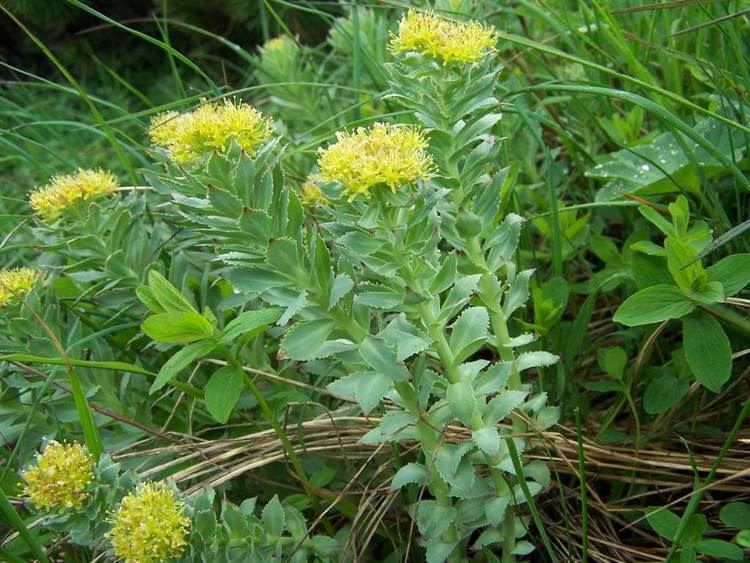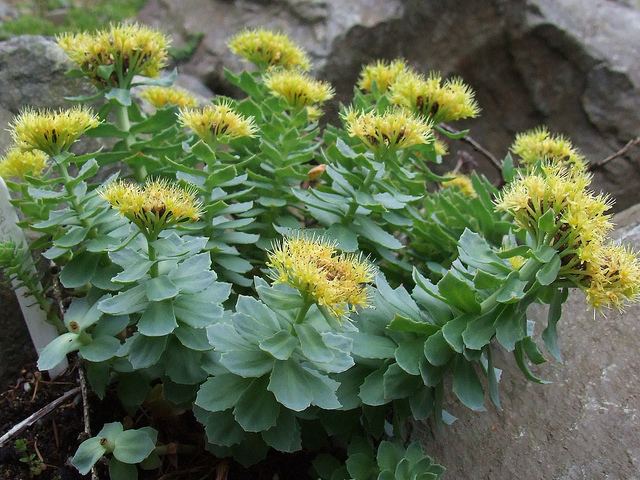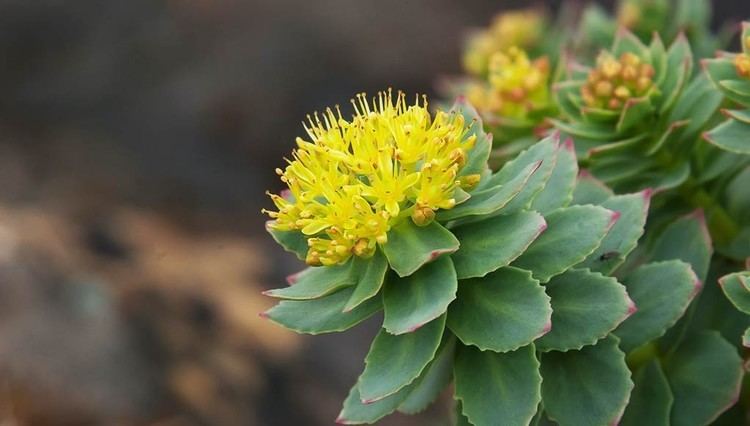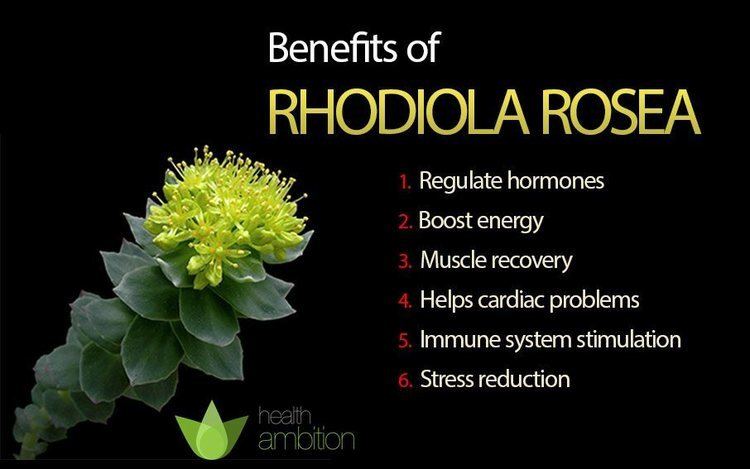Higher classification Rhodiola | Genus Rhodiola Rank Species | |
 | ||
Similar Rennet, Siberian Ginseng, Five‑flavor berry, Rhodiola, Crassulaceae | ||
Rhodiola rosea (commonly golden root, rose root, roseroot, western roseroot, Aaron's rod, Arctic root, king's crown, lignum rhodium, orpin rose) is a perennial flowering plant in the family Crassulaceae. It grows naturally in wild Arctic regions of Europe, including Britain, Asia and North America, and can be propagated as a groundcover. Although it has long been used in traditional medicine for several disorders, notably including treatment of anxiety and depression, there is little scientific evidence to verify these uses.
Contents
- Rhodiola rosea russian plants ready for fall transplant
- Description
- Taxonomy
- Distribution
- Food
- Traditional medicine
- Research and regulation
- Chemical constituents
- References

Rhodiola rosea russian plants ready for fall transplant
Description

Rhodiola rosea is from 5 to 40 centimetres (2.0 to 15.7 in) tall, fleshy, and has several stems growing from a short, scaly rootstock. Flowers have 4 sepals and 4 petals, yellow to greenish yellow in color sometimes tipped with red, about 1 to 3.5 millimetres (0.039 to 0.138 in) long, and blooming in summer. Several shoots growing from the same thick root may reach 5 to 35 cm in height. R. rosea is dioecious – having separate female and male plants.
Taxonomy
The first time that R. rosea is described was from Dioscorides in De Materia Medica.
Western North American plants formerly included in R. rosea are now treated as Rhodiola integrifolia and Rhodiola rhodantha.
Distribution

R. rosea grows in cold regions of the world, including much of the Arctic, the mountains of Central Asia, scattered in eastern North America and mountainous parts of Europe. It grows on sea cliffs and on mountains at high altitude.
Food

The leaves and shoots are eaten raw, having a bitter flavor, or cooked like spinach, and are sometimes added to salads.
Traditional medicine
In Russia and Scandinavia, R. rosea has been used for centuries to cope with the cold Siberian climate and stressful life. It is also used to increase physical endurance and resistance to high-altitude sickness, but the scientific evidence for such benefits is weak. The plant has been used in traditional Chinese medicine, where it is called hóng jǐng tiān.
Research and regulation

Through 2012, human studies evaluating R. rosea did not have sufficient quality to determine whether it has properties affecting fatigue or any other condition.
As an ingredient in some dietary supplement products, R. rosea has been evaluated by the U.S. Food and Drug Administration (FDA) which declared the products to be unapproved new drugs, adulterated, misbranded and in federal violation for not having proof of safety or efficacy for the advertised conditions of alleviating Raynaud syndrome, altitude sickness, and depression. R. rosea is also listed on the FDA's Poisonous Plant Database.
Chemical constituents
Scientists have identified about 140 chemical compounds in the subterranean portions of R. rosea. Rhodiola roots contain phenols, rosavin, rosin, rosarin, organic acids, terpenoids, phenolcarbonic acids and their derivatives, flavonoids, anthraquinones, and alkaloids.
The chemical composition of the essential oil from R. rosea root growing in different countries varies. For example, rosavin, rosarin and rosin at their highest concentration according to many tests can be found only in R. rosea of Russian origin; the main component of the essential oil from Rhodiola growing in Bulgaria are geraniol and myrtenol; in China the main components are geraniol and 1-octanol; and in India the main component is phenylethilic alcohol. Cinnamic alcohol was discovered only in the sample from Bulgaria.
Although rosavin, rosarin, rosin and salidroside (and sometimes p-tyrosol, rhodioniside, rhodiolin and rosiridin) are among suspected active ingredients of R. rosea, these compounds are mostly polyphenols. There is no evidence that these chemicals have any physiological effect in humans that could prevent or reduce risk of disease. Although these phytochemicals are typically mentioned as specific to Rhodiola extracts, there are many other constituent polyphenols, including proanthocyanidins, quercetin, gallic acid, chlorogenic acid and kaempferol.
